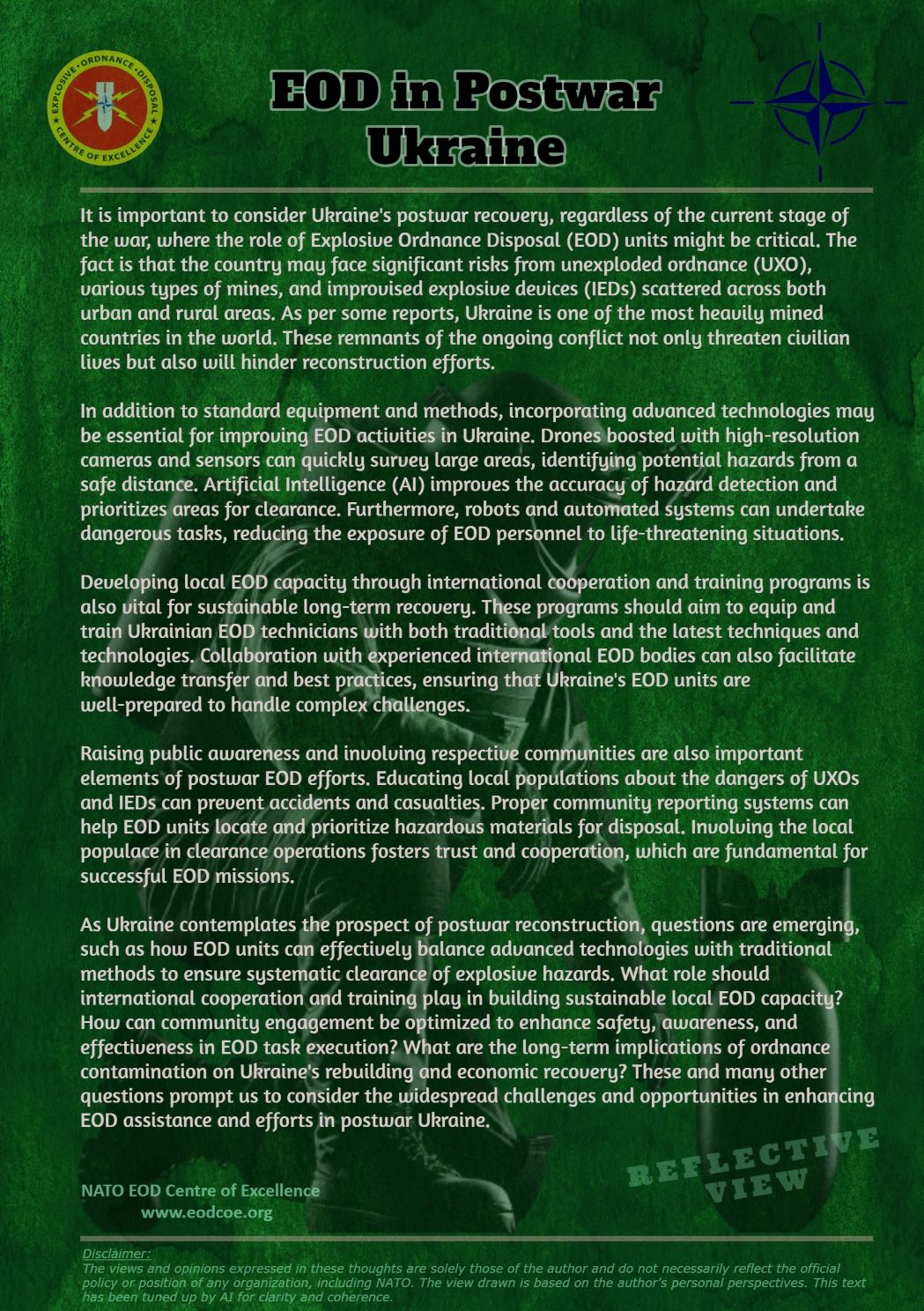
EOD in Postwar Ukraine
It is important to consider Ukraine's postwar recovery, regardless of the current stage of the war, where the role of Explosive Ordnance Disposal (EOD) units might be critical. The fact is that the country may face significant risks from unexploded ordnance (UXO), various types of mines, and improvised explosive devices (IEDs) scattered across both urban and rural areas. As per some reports, Ukraine is one of the most heavily mined countries in the world. These remnants of the ongoing conflict not only threaten civilian lives but also will hinder reconstruction efforts.
In addition to standard equipment and methods, incorporating advanced technologies may be essential for improving EOD activities in Ukraine. Drones boosted with high-resolution cameras and sensors can quickly survey large areas, identifying potential hazards from a safe distance. Artificial Intelligence (AI) improves the accuracy of hazard detection and prioritizes areas for clearance. Furthermore, robots and automated systems can undertake dangerous tasks, reducing the exposure of EOD personnel to life-threatening situations.
Developing local EOD capacity through international cooperation and training programs is also vital for sustainable long-term recovery. These programs should aim to equip and train Ukrainian EOD technicians with both traditional tools and the latest techniques and technologies. Collaboration with experienced international EOD bodies can also facilitate knowledge transfer and best practices, ensuring that Ukraine's EOD units are well-prepared to handle complex challenges.
Raising public awareness and involving respective communities are also important elements of postwar EOD efforts. Educating local populations about the dangers of UXOs and IEDs can prevent accidents and casualties. Proper community reporting systems can help EOD units locate and prioritize hazardous materials for disposal. Involving the local populace in clearance operations fosters trust and cooperation, which are fundamental for successful EOD missions.
As Ukraine contemplates the prospect of postwar reconstruction, questions are emerging, such as how EOD units can effectively balance advanced technologies with traditional methods to ensure systematic clearance of explosive hazards. What role should international cooperation and training play in building sustainable local EOD capacity? How can community engagement be optimized to enhance safety, awareness, and effectiveness in EOD task execution? What are the long-term implications of ordnance contamination on Ukraine's rebuilding and economic recovery? These and many other questions prompt us to consider the widespread challenges and opportunities in enhancing EOD assistance and efforts in postwar Ukraine.